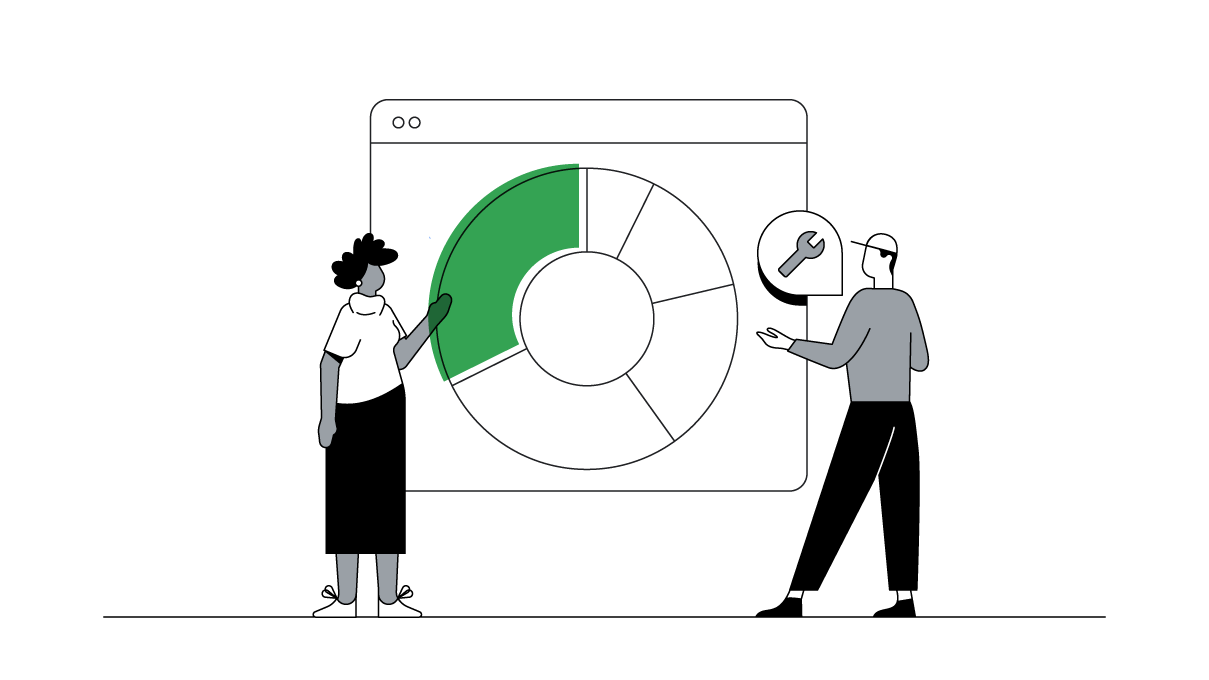Joshua Spanier is Google’s global marketing VP for media. He leads teams around the world who plan, buy, run, and assess media on behalf of Google’s brands. Grace Liau, head of media for Asia Pacific, provides APAC-specific insights to illustrate Joshua Spanier’s perspective.
When this pandemic first started, many business leaders, myself included, turned to the “buckle up” mantra. Cliché, yes, but it was a visual metaphor that elicited visions of safety and preparedness in the midst of crisis and sudden change. We were “buckling up” to be ready: seat belts, safeguards, mental preparedness.
In hindsight, I didn’t fully comprehend what I was buckling up for. No one did. A roller coaster, perhaps. But roller coasters are short — a few minutes of twists and drops, then they’re over. This pandemic is no typical roller coaster.
For our media teams at Google right now, we’re moving from crisis reaction mode into a more pragmatic response phase. I wish I could say we’re “settling in,” but even that’s a euphemism. The reality is there are still loads of unanswered questions and tough decisions to be made.
As I reflect on where our focus has been forced, a back-to-basics mentality is emerging. The coronavirus pandemic is teaching us about how to run campaigns that will live beyond this moment. And though it has been an extremely painful experience, perhaps it will make us all better marketers in the long term.
In this moment, when planned campaigns have been shelved, we’re gaining a renewed appreciation for following our users’ lead.
The typical launch playbook for capturing and creating demand has been thrown out
At Google, we’re quite accustomed to user-first thinking. In fact, “Know the user. Know the magic. Connect the two,” is a mantra that runs deep among our marketing teams. But in this moment, when planned campaigns have been shelved, we’re gaining a renewed appreciation for following our users’ lead.
Like most large marketing organizations, we typically focus on multimedia campaigns built around key moments that define our calendar year. We plan campaigns in support of those moments with a beginning, a middle, and an end in mind. The sequence roughly looks like this: You have a prelaunch period, led by PR; you manufacture an “epic” kickoff, sustained by ongoing (often expensive) high-impact media across paid and owned channels; and you deploy scaled direct-response media to capture demand throughout. But that’s how things used to be, pre-COVID-19.
The current reality has forced all of us marketers to be far more driven by what people need rather than broadcasting to them in a predefined moment we choose. Throwing out the playbook has forced and demanded that we be more fluid, dynamic, and grounded in data to tap into real-time consumer intent. And that’s a good thing for the long run.
Here’s how I’ve been thinking about what this means for us at Google.
We’re tapping into consumer trends — and Google data — more than ever
We’re looking at Search and YouTube trends every day to identify what people are leaning into in this unprecedented moment. For example, you’ve probably noticed your social feeds are full of bread baking. Although we don’t sell bread makers or baking equipment, we do sell products that can help with the process, like Google Nest Hub screens. When we saw the trend rising (pun intended), we worked with our creative partners to update ad creative and even search ad copy to be more relevant in this unique moment based on what real people are actually doing.
Here’s another example of how we’re tapping into relevant trends: When people’s fascination with tigers exploded globally (thanks to Netflix’s “Tiger King”), we had an opportunity to surface existing augmented reality (AR) technology in Google Search that would allow users to superimpose a tiger (or a lion or a horse or a duck … ) into their living rooms. As interest in tigers picked up, we quickly made organic social posts to fuel the fun and increased our PR outreach. The result? A huge increase in people trying our AR technology, led by a trend in tigers.
A tiger superimposed in a living room, thanks to AR Google Search

Of course, using data and insights to drive marketing activities is nothing new. Yet I’m hopeful that mining real-time insights like this is a muscle we’ll strengthen that can serve our teams well into the future.
We’re moving faster than we’ve ever had to (or at least in a very long while)
The promise of digital marketing has always been enabling speed, agility, and transparent reporting. The challenge of marketing in a pandemic has regrounded us in that promise. We’ve had to embrace the capacity of digital media to flex and move. All of a sudden, decisions that used to take days or even weeks are being made in hours. Media plans are being put together with less gloss and polish, and analysis is more collaborative as we all come together with a sense of urgency to get work done.
With pressure on discretionary marketing spend, we’re also moving quickly to pull the plug where underperformance is detected earlier than we typically would have. For example, one campaign that had been performing well saw a downturn once COVID-19 became a reality. In another time, we could have dithered for weeks, coming up with ideas, options, and tests to try and turn campaign performance around. Instead, we came together, recognized the opportunity cost, shut down the campaign, and redeployed resources to programs that are increasing their performance.
In this moment, businesses need to know that marketing spend is driving immediate results.
Moving forward, I want our teams to recall this moment of speed and urgency as the benefit that it is. My hope is we can hold onto this discipline well after the pandemic.
We’re doubling down on proven, attributable media
In this moment, businesses need to know that marketing spend is driving immediate results. And that’s no different for us at Google. We’ve leaned more heavily into proven direct response channels and tactics where we can see, track, and measure the return on investment with immediacy. We are also ensuring alignment between our brand and direct response campaigns so our media dollars work harder and in a more coordinated fashion.
That doesn’t necessarily mean we’re pulling all of our brand campaigns. It just means that we’re being careful to ensure that when we do run them, we’re maximizing their impact. For instance, in India, we featured food shelters and proper hand-washing techniques as the lockdown was imposed. In Japan, we launched our “#StayAtHome” campaign as the country entered into an extended state of emergency during the Golden Week national holidays when traditionally travel occurs en masse.
Moving forward, we’ll be even more thoughtful about where, how, and when we deploy brand campaigns.
With all the grief and turmoil in the world right now, it’s been helpful for me to try to focus on the good — not only of humanity, but of what I’ll take from this professionally. It’s been productive to think about how we’ll maintain the best of what we’re doing now going forward, even after the pandemic ends. It may be an exercise worth doing with your own team. At the very least, it’s giving me a bit of hope for life after the roller coaster ends.








